When life as you know it ends, you won’t be able to run to the pharmacy to pick up medication.
There won’t be a store shelf full of pain relievers, fever reducers, or cough suppressants for you to select from. Instead, you’ll be on your own, trying to figure out what you can use to help yourself or a loved one feel better. If your stockpile of medication is empty, you’ll need another plan.
The good news?
Nature is full of healing medication in the form of plants. You just need to know which ones to use, because there are also plenty of plants that’ll kill you. You don’t want to ingest the wrong one by mistake.
Find out our Firefather’s Time-Tested Natural Cures and Household Remedies
The Native Americans know the healing power of plants. Their knowledge of natural remedies is remarkable. It’s time to take a lesson from them and learn about some of the best plants to use when you’re injured or sick.
Three Quick Tips for Gathering Medicinal Herbs
Because of their respect for the earth, Native Americans didn’t want to destroy a crop while they were harvesting herbs. Here are three of their guidelines for gathering that can help us all.
- Never tell anyone where your crop of healing medication is growing. This prevents everyone from coming to find it and taking all harvestable plants.
- Don’t pick too many. The rule of thumb was to pick one plant for every three that you see. This way the plant continues propagating.
- Know what you are picking. The chemical properties of plants are remarkable. But, those properties can also be deadly if used incorrectly. Don’t pick if you aren’t positive what you are gathering.
7 of the Best Medicinal Plants to Know
Here are seven of the best medicinal plants that Native Americans for a variety of remedies. Learn how to identify these, and how to use them. This knowledge might just save your life.
1. Blackberries
Easily identifiable, blackberries are the perfect plant to use to begin experimenting with natural remedies. When prepared properly, the different parts of the plants help treat many ailments.
The Roots
Blackberry roots contain tannins. These have an astringent property, especially for the digestive tract.
By creating a tea or tincture, you can harness these tannins to help treat diarrhea, hemorrhoids, and other problems in the digestive system.
If you dry the root and make a tea, you can help alleviate edema.
When you make a decoction from the roots and then mix it with a little honey, you have a natural expectorant.
Finally, if you combine the roots with the leaves and make a tea, it’s a well-known home treatment for cholera and anemia.
The Leaves
Chewing on fresh blackberry leaves helps relieve bleeding gums and mouth sores.
By making an infusion from the leaves, you create a powerful tonic. This is used to stimulate your entire body.
Tea from the leaves helps regulate a woman’s menstrual cycle.
The Fruit
Blackberries are full of antioxidants. They are also thought to help relieve anemia when eaten regularly.
Making an infusion from the berries is also beneficial. Some people apply this externally to help cure dry and scaly skin.
2. Slippery Elm
A tree native to the central and eastern United States, slippery elm can help alleviate the symptoms of many conditions. The main active ingredient is mucilage. Typically, people harvest just and then dry it. Then, it’s either ground into a powder and mixed into drinks or mixed with boiling water to create a paste for topical applications.
Native Americans used slippery elm to treat:
- Diarrhea
- Sore throats
- Heartburn
- A dry cough
- Skin inflammation
- Minor wounds and burns
3. Mullein
Often referred to as the cowboy’s toilet paper, mullein is easy to identify with it’s soft leaves. The Native Americans used this plant for a variety of purposes, including medicinal ones. Here are some separate ways the parts of this plant can be used:
Flowers
Dried or fresh, mullein flowers can help improve asthma and bronchitis.
Tincture from the flowers has been used to reduce inflammation and pain from ear infections.
A tea from the flowers helps alleviate pain from a sore throat. This tea is also beneficial in the treatment of the cold or flu.
A poultice from the leaves and flowers helps heal bruises and sprains.
Leaves
Tea made from the leaves helps fight infection. You can also soak a rag in this tea and place it on your joints to help reduce swelling and pain.
Native Americans would dry the mullein leaves and smoke them in pipes. This practice was thought to help reduce congestion.
Roots
After drying and grinding the root, you can create a tincture or use the powder to fill capsules. This helps maintain the urinary system and has been used to treat bedwetting.
A decoction from mullein root can be used as a foot soak to reduce swelling.
4. Red Clover
The red clover plant has many medicinal uses. You can harvest the leaves and flowers to dry. Once they’re ready, you can steep them to create red clover tea.
Red clover thins your blood, so it can be useful in keeping clots away. However, if you are taking blood-thinning medications or are going to have surgery, you shouldn’t use this plant.
In addition to its blood thinning properties, red clover is also thought to:
- Alleviate persistent coughs
- Reduce hypertension
- Boost the immune system and prevent illness
- Lower cholesterol levels
- Improve blood circulation
5. Yarrow
Yarrow has fernlike, lacy leaves and tiny white flowers. Native Americans crushed the fresh leaves of this plant, and used them to help stop bleeding. When turned into a poultice, these leaves can help relieve a rash, and acne.
Yarrow tea steeped from the leaves helps stop internal bleeding. It was thought to help with hemorrhaging, and to prevent blood clots.
The tea can also cause sweating, which reduces a fever.
6. Wild Sumac
A deciduous bush found in many different climates, wild sumac has extensive medicinal uses. Here are some ways Native Americans used the various parts of this plant.
Roots
You can peel young shoots and roots and eat them raw. You can also make an infusion of the bark and roots, and use it to treat:
- Sore mouths
- Rectal bleeding
- Fevers
- Colds
- Inflammation of the bladder
It’s also thought to increase milk supply for nursing mothers.
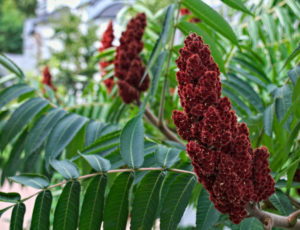 Bark
Bark
Drying the bark allows you to turn it into a powder. You can use this to create an antiseptic salve.
Leaves
When you create a poultice from sumac leaves, it’s beneficial for rashes.
You can also chew the fresh leaves to help alleviate pain from sore gums or lips.
Berries
Native Americans often made infusions with sumac berries. It was used to treat constipation and painful menstruation.
When chewed, fresh berries were believed to help reduce bedwetting.
Milky Substance from Breaking the Plant
When broken, sumac releases a milky substance. This contains large quantities of tannic acid, and was used to create a medicinal wine.
This substance has also been used as a salve on wounds.
7. Feverfew
A perennial in the daisy family, feverfew plants have a strong scent. When they bloom, they have small flowers that resemble daisies.
The leaves are the most commonly used medicinal remedy. You can eat them fresh or dry them to store. They are bitter, so you may want to eat them with honey. Alternatively, you can make a tincture.
Feverfew leaves have been used to:
- Break a fever
- Relieve migraines or other headaches
- Treat pain
- Relieve a toothache
- Improve depression

Treating with Nature
The Native Americans knew how to treat almost every ailment with nature. It’s a skill you should begin learning as well. Begin your studies with this brief list of seven plants. Then move on from there.
Herbal remedies can mean the difference between life and death when you can’t get to a doctor or head to the store to buy medication.
Source: survivopedia.com
Survival Books
THE LOST BOOK OF REMEDIES-All Medicinal Plants and Lost Cures of North America
THE LOST WAYS-Learn the long forgotten secrets that helped our forefathers survive famines,wars,economic crisis and anything else life threw at them
EASY CELLAR-AMERICA’S NATURAL NUCLEAR BUNKERS: FIND THE CLOSEST ONE TO YOUR HOME
THE LOST WAYS 2-This lost super-food will bulletproof you against any food shortage or famine
BLACKOUT USA-EMP survival and preparedness guide
DIY HOME ENERGY-Follow the step-by-step guide from A to Z and you will have a working system to reduce your electricity bills and save energy
MY SURVIVAL FARM-This hidden survival garden will keep you well fed when SHTF
MEAT FOR LIFE -THE REAL HOMEMADE AND HEALTHY MEATY TREATS OUR GRANDPARENTS USED TO MAKE…

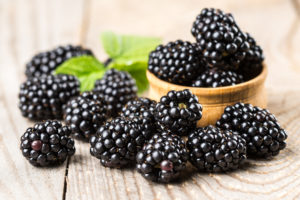
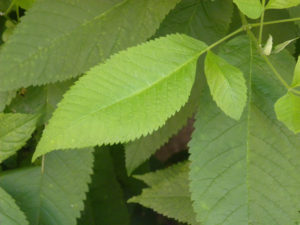
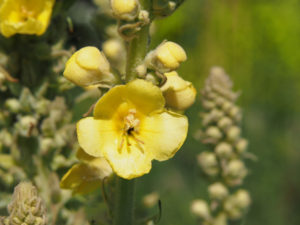

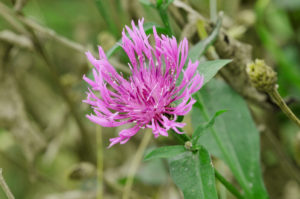
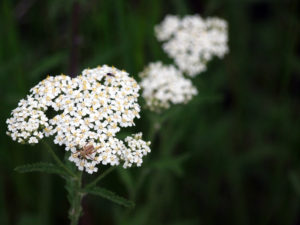
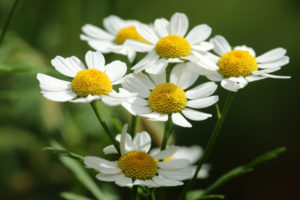
Yarrow also is used as a remedy for altitude sickness.
You can eat the flowers, or just chew them and discard.